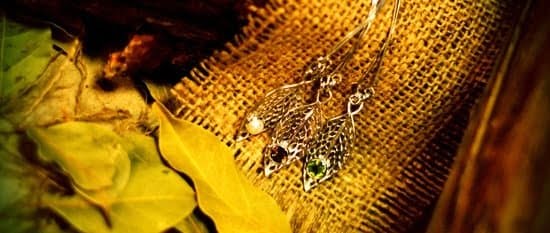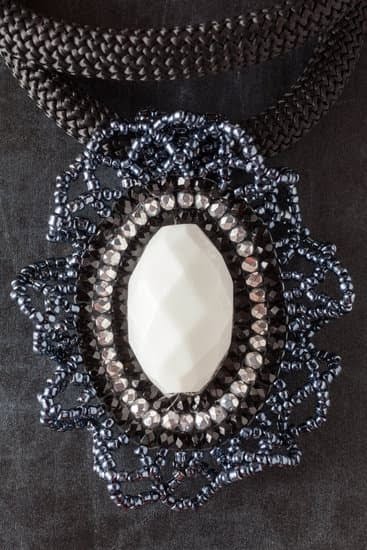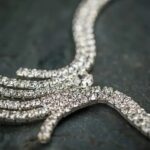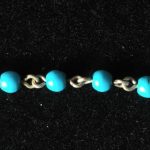The history of Pakistani jewelry is rich and deeply embedded in the culture and traditions of the region. For centuries, jewelry has played a significant role in Pakistani society, representing not only beauty and adornment but also social status and cultural heritage. From traditional jewelry making techniques to modern adaptations, Pakistani jewelry has evolved over time while still retaining its unique identity.
Pakistani jewelry encompasses a wide range of styles, materials, and designs that reflect the diverse influences of the region’s history, culture, and craftsmanship. This article aims to explore the historical context of Pakistani jewelry, its significance in society, and how it has evolved over time. Additionally, we will delve into the traditional techniques used in crafting these exquisite pieces, as well as their role in celebrations and festivals.
Throughout this article, we will take a closer look at the influences of Pakistani culture on jewelry designs, famous styles and materials used in Pakistani jewelry making, and the future of the industry. By understanding the history and cultural significance of Pakistani jewelry, we can gain insight into its enduring importance in society today.
Traditional Jewelry Making Techniques in Pakistan
Traditional Pakistani jewelry making techniques have been passed down through generations, each technique embedded with the rich cultural history of the region. These techniques are a testament to the skill and artistry of Pakistani jewelers, creating timeless pieces that continue to be treasured.
Artisanal Craftsmanship
One of the traditional jewelry making techniques in Pakistan is artisanal craftsmanship, which involves handcrafting intricate designs using tools such as hammers, chisels, and files. Skilled artisans meticulously carve out patterns and motifs on metals such as gold, silver, and copper to create stunning pieces that reflect the cultural heritage of Pakistan.
Engraving and Embellishment
Engraving and embellishment are also prominent techniques in Pakistani jewelry making. Artisans employ delicate engraving methods to intricately etch designs onto metal surfaces, adding depth and texture to their creations. Furthermore, embellishments such as gemstone settings and filigree work are incorporated into the jewelry, showcasing the mastery of Pakistani craftsmen in creating luxurious and ornate pieces.
Filigree Work
Filigree work is another traditional technique that is synonymous with Pakistani jewelry. This intricate method involves twisting and curling fine threads of metal (usually silver or gold) to create lacy patterns reminiscent of lacework. The result is exquisite and detailed jewelry pieces that exude elegance and sophistication.
The history of Pakistani jewelry making techniques is a testament to the country’s rich cultural heritage. These traditional methods not only showcase the skill and artistry of Pakistani artisans but also contribute to keeping the historical craft alive for future generations to appreciate.
Influences of Pakistani Culture on Jewelry Designs
The history of Pakistani jewelry is rich and diverse, reflecting the cultural influences that have shaped its designs over the centuries. From intricate gold and silver designs to colorful gemstone embellishments, Pakistani jewelry has a distinct aesthetic that is deeply rooted in the traditions and customs of the region.
The influences of Pakistani culture on jewelry designs can be seen in the use of traditional motifs and symbols. These designs often incorporate elements from nature, such as flowers, leaves, and birds, which hold significant meaning in Pakistani culture. Additionally, religious influences are also evident in many jewelry pieces, with motifs inspired by Islamic art and architecture.
Furthermore, regional diversity plays a vital role in shaping Pakistani jewelry designs. Each province and ethnic group within Pakistan brings its own unique craftsmanship and design aesthetics to the industry. For example:
- The floral-inspired designs of Multan’s blue pottery
- The intricate metalwork of Peshawar’s Khyber Pakhtunkhwa province
- The vibrant colors and mirror work of Sindh’s Thar Desert
These diverse cultural influences come together to create a dynamic and varied landscape for Pakistani jewelry design, showcasing a wide range of styles and techniques that are celebrated both within Pakistan and around the world.
Significance of Jewelry in Pakistani Society
Jewelry holds a significant place in Pakistani society, with deep cultural and traditional roots. From ancient times to the present day, jewelry has been an integral part of Pakistani culture, symbolizing social status, wealth, and aesthetic beauty. The significance of jewelry in Pakistani society is multifaceted and it plays a vital role in various aspects of life.
Symbol of Status and Wealth
In Pakistani society, the ownership of jewelry is often seen as a reflection of one’s social standing and financial stability. Families often pass down valuable pieces of jewelry through generations, signifying their wealth and heritage. Traditional bridal jewelry, known as “Bridal Trousseau,” is often considered an indicator of the family’s prestige and influence.
Expression of Cultural Identity
Jewelry in Pakistan is deeply intertwined with cultural identity. Each region and province boasts its unique style and design traditions that are reflected in the jewelry worn by the people. For example, Sindhi women often adorn themselves with elaborate glass bangles and colorful beaded jewelry, while Pashtun women are known for wearing chunky silver jewelry adorned with vibrant gemstones.
Celebratory and Ritualistic Purposes
Jewelry plays a pivotal role in various celebrations and rituals within Pakistani society. From weddings to religious festivals, traditional attire is incomplete without the addition of intricately crafted jewels. For instance, during weddings, brides are adorned with heavy sets of gold or silver jewelry to enhance their beauty and commemorate their special day. Jewelry is also presented as gifts during religious ceremonies or milestones such as childbirth or coming-of-age ceremonies.
As we explore the significance of jewelry in Pakistani society, it becomes evident that it goes beyond mere adornment – it serves as a reflection of cultural identity, social status, family heritage, and plays a vital role in various aspects of life within the country.
Evolution of Pakistani Jewelry Trends
The evolution of Pakistani jewelry trends has been a result of centuries of cultural influences and artistic innovation. The history of Pakistani jewelry is deeply rooted in the rich traditions and heritage of the region, with each era adding new elements to the designs and techniques. From ancient civilizations to modern times, the jewelry trends in Pakistan have undergone significant changes, reflecting the social, political, and economic developments of the country.
Throughout history, Pakistani jewelry has been a symbol of status, wealth, and cultural identity. Traditional jewelry making techniques such as Kundan, Jadau, and Meenakari have been passed down through generations, continuing to shape the aesthetic appeal of Pakistani jewelry. These techniques involve intricate craftsmanship and meticulous attention to detail, resulting in exquisite pieces that are revered both within Pakistan and internationally.
The historical context of Pakistani jewelry is also influenced by various external factors such as trade with neighboring regions and invasions from foreign powers. This has led to a fusion of styles and materials, creating a diverse range of designs that showcase the multicultural essence of Pakistani jewelry. The use of precious metals such as gold and silver, along with gemstones like emeralds, rubies, and sapphires, has been a consistent feature in the evolution of Pakistani jewelry trends.
Famous Pakistani Jewelry Styles and Materials
Pakistani jewelry is known for its intricate designs and the use of various materials, showcasing the rich heritage and cultural influences of the region. From traditional styles to modern innovations, Pakistani jewelry has evolved over the years, reflecting the diverse history and traditions of the country.
Some famous Pakistani jewelry styles and materials include:
- Kundan Jewelry: Kundan jewelry is a traditional form of Indian and Pakistani gemstone jewelry, typically made with glass stones set in gold. This style of jewelry is popular for special occasions such as weddings and festivals.
- Jadtar Jewelry: Jadtar jewelry is a type of traditional Pakistani jewelry that involves setting precious stones like diamonds, rubies, emeralds, and pearls in intricate designs on gold.
- Thewa Jewelry: Thewa is a specialized art form of Indian and Pakistani jewelry making where intricately worked-out sheet gold is set with precious stones or enameling to create elaborate designs.
- Gold and Silver Jewelry: Gold and silver continue to be popular metals used in Pakistani jewelry making due to their durability and cultural significance. These metals are often incorporated into various styles such as filigree work, enamel work, and hammered metal designs.
- Gemstones: Pakistan is known for its abundance of precious gemstones such as rubies, emeralds, sapphires, topaz, aquamarine, tourmaline, garnet, etc. which are used in creating stunning pieces of traditional Pakistani jewelry.
The fusion of these styles and materials in Pakistani jewelry reflects the country’s history and cultural diversity. From Mughal influences to regional tribal traditions, each piece tells a story about the heritage of Pakistan. As the industry continues to evolve, there is an increasing emphasis on combining traditional techniques with contemporary designs to cater to a global audience while preserving the roots of Pakistani jewelry making.
Historical Context of Pakistani Jewelry
Pakistani jewelry has a rich and fascinating history that dates back centuries. The history of Pakistani jewelry is deeply intertwined with the country’s diverse cultural heritage, as well as its long-standing traditions and customs. Over the years, Pakistani jewelry has evolved in response to various influences from different regions, resulting in a wide range of styles and designs that are both unique and exquisite.
The history of Pakistani jewelry can be traced back to ancient civilizations such as the Indus Valley civilization, where evidence of intricate ornaments and jewelry-making techniques have been uncovered. These early forms of jewelry were crafted using materials such as gold, silver, precious gemstones, and beads. The craftsmanship and attention to detail displayed in these ancient pieces reflect the skill and artistry of the early Pakistani artisans.
Throughout history, Pakistani jewelry has also been influenced by various external forces, including the Mughal Empire, Persian culture, and British colonial rule. Each influence left its mark on Pakistani jewelry, shaping its design elements and techniques in subtle yet significant ways. For example, during the Mughal era, elaborate enameled designs known as “meenakari” became popular in Pakistani jewelry making.
In addition to external influences, historical events such as invasions and trade routes have also played a role in shaping the evolution of Pakistani jewelry. As a result, Pakistani jewelry encompasses a wide array of styles that reflect the country’s vibrant past and cultural diversity. Understanding the historical context of Pakistani jewelry provides valuable insight into its significance within the country’s culture and society.
Modern Adaptations and Innovations in Pakistani Jewelry Making
The history of Pakistani jewelry is rich and diverse, with a long tradition of exquisite craftsmanship and unique designs. In recent years, the Pakistani jewelry industry has seen modern adaptations and innovations that have shaped the way jewelry is made and worn in the country. These changes have not only impacted the aesthetics of Pakistani jewelry but have also influenced the way it is produced and marketed.
One major innovation in Pakistani jewelry making is the use of modern technology in the production process. Traditional handcrafted techniques are still highly regarded, but many artisans and designers have incorporated 3D printing, laser cutting, and computer-aided design (CAD) into their work. This has allowed for more intricate and precise designs, as well as faster production times.
Another notable adaptation in Pakistani jewelry making is the use of sustainable and ethical practices. With growing awareness about environmental issues and fair labor practices, many jewelry makers in Pakistan are turning to eco-friendly materials and ensuring that their supply chains are ethical and transparent. This shift towards sustainability has not only attracted a new generation of conscious consumers but has also positioned Pakistani jewelry as a global leader in responsible production.
Moreover, there has been a fusion of traditional Pakistani jewelry styles with international fashion trends. This blending of cultural heritage with contemporary elements has resulted in unique pieces that appeal to both domestic and international markets. From statement earrings with geometric patterns to minimalist rings with traditional motifs, these modern adaptations have solidified Pakistani jewelry’s position as a symbol of heritage and sophistication.
| Modern Adaptations | Innovations |
|---|---|
| Use of modern technology | 3D printing, laser cutting, CAD |
| Sustainable practices | Eco-friendly materials, ethical supply chains |
| Fusion of traditional styles with international trends | Cultural heritage meets contemporary design |
Role of Pakistani Jewelry in Celebrations and Festivals
The role of Pakistani jewelry in celebrations and festivals is deeply rooted in the culture and traditions of the country. Jewelry holds a special significance during these occasions as it is not only considered a symbol of wealth and status, but also plays a crucial role in expressing cultural identity and heritage. Whether it is a wedding, Eid, or any other festive celebration, Pakistani women adorn themselves with exquisite jewelry to enhance their beauty and showcase their cultural pride.
During weddings in Pakistan, the bride is adorned with heavy and ornate jewelry sets, including elaborate necklaces, earrings, bangles, and headpieces. These pieces are often passed down through generations and hold sentimental value for the family. Each piece of jewelry holds its own cultural and traditional significance, often representing blessings for prosperity, happiness, and good fortune for the newlywed couple.
In addition to weddings, festivals such as Eid-ul-Fitr and Eid-ul-Adha also see a surge in the demand for traditional Pakistani jewelry. Families buy new jewelry sets for their loved ones as gifts to celebrate these joyous occasions.
The intricate designs and craftsmanship of Pakistani jewelry reflect the rich heritage of the region, making it an essential part of the cultural celebrations. As a result, Pakistani jewelry continues to play a pivotal role in enhancing the overall ambiance of these festivities.
| Role of Jewelry | Cultural Significance |
|---|---|
| Pakistani weddings | Symbolizes blessings for prosperity and happiness |
| Eid celebrations | Showcases cultural pride and heritage |
The Future of Pakistani Jewelry Industry
In conclusion, the history of Pakistani jewelry is rich and diverse, reflecting the country’s vibrant culture and traditions. Traditional jewelry making techniques have been passed down through generations, contributing to the unique designs and styles that are still popular today. The influences of Pakistani culture on jewelry designs are evident in the intricate patterns, vibrant colors, and use of precious gemstones.
The significance of jewelry in Pakistani society goes beyond mere adornment; it has deep cultural and social importance, symbolizing status, wealth, and marital relationships. Over time, Pakistani jewelry trends have evolved to incorporate modern styles and materials while still maintaining the essence of traditional craftsmanship.
Looking ahead, the future of the Pakistani jewelry industry appears promising with modern adaptations and innovations in jewelry making. The industry continues to thrive as Pakistani jewelry plays a central role in celebrations and festivals, further solidifying its place in the country’s cultural heritage.
As the demand for authentic handcrafted pieces grows internationally, there is great potential for Pakistani jewelry to gain recognition on a global scale. Ultimately, the history of Pakistani jewelry serves as a testament to its enduring appeal and timeless beauty.
Frequently Asked Questions
What Is Pakistani Jewellery Called?
Pakistani jewellery is often referred to as “Jadau” or “Kundan” jewellery. These are traditional forms of jewellery that are known for their intricate designs and use of precious and semi-precious stones.
What Is the History and Origin of Jewellery?
The history of jewellery dates back thousands of years, with early humans using shells, animal teeth, and other natural materials to adorn themselves. Over time, jewellery became a symbol of status, wealth, and cultural significance in various civilizations around the world.
What Are the Ornaments of Pakistan?
Pakistan is known for its diverse range of ornaments, including necklaces, earrings, bangles, rings, and headpieces. These ornaments are often made with gold, silver, or other metals and are adorned with colorful gemstones and intricate designs that reflect the rich artistic heritage of the region.

Welcome to my jewelry blog! My name is Sarah and I am the owner of this blog.
I love making jewelry and sharing my creations with others.
So whether you’re someone who loves wearing jewelry yourself or simply enjoys learning about it, be sure to check out my blog for insightful posts on everything related to this exciting topic!





